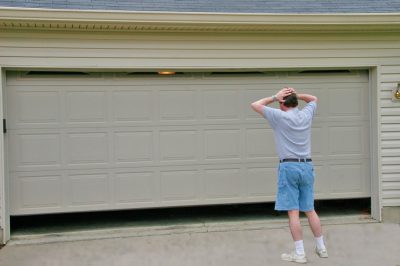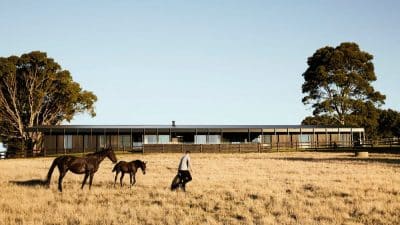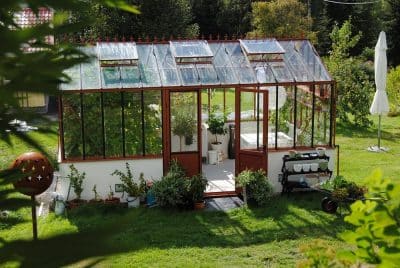
Usually when we say the word “basement”, what comes to mind is a cold, dimly lit place isolated from the rest of the house, where we store those objects or boxes that we don’t want to have around; but appearances are deceiving. Did you know that a basement can have so much potential? Discover with us how to recover this space and make it a refuge where you can enjoy small moments of relaxation.
What is meant by basement?
Before getting practical and explaining the work to recover a basement, it is important to define this space. By basement, therefore, we mean a floor of a building that has a floor at a lower level, in whole or in part, than that of the adjacent land and which has a ceiling at a higher level than the adjacent land. Its peculiarities are walls surrounded by the ground, high windows, from which it is impossible to look out, and a lower internal height than the normal living areas of the house.
In summary, the perimeter walls of the basement are largely surrounded by the ground and the windows are usually so high up, compared to the internal floor, that they do not allow easy access to the outside. Another recurring characteristic of basement rooms is that of having a lower internal height than the normal living areas of the house.
Advantages of a habitable basement
The habitable basement has become a trend in recent years as it entails various advantages, first of all, this place lends itself as an alternative to land consumption. The other advantages of living in a basement are:
- The independent entrance and direct access to the outside, in this way you do not pass through the common areas;
- Savings, because for the same size you can spend up to 70% less compared to another type of housing solution.
When to transform the basement into a home?
A basement can be transformed into a home under certain conditions. However, this freedom depends, fundamentally, on the possibility of respecting the main hygienic, health, and regulatory requirements of the residential construction.
So, to the question “when is it possible to transform a basement into a home?”, the answer will, in any case, be “it depends”. Or “ whenever it is possible to respect the air lighting and sanitary hygiene parameters, as well as fully satisfying the regulations regarding fire prevention, anti-seismic, energy efficiency and accessibility. ”If with specific interventions, more or less invasive, it is possible to respond to all the requirements then the basement can be transformed into a home.
In most cases, the most widespread problems concern compliance with the minimum height of the room (which is generally 2.70 meters) and the possibility of guaranteeing the correct supply of light and air, being able to count on surfaces exposed to the outside that are smaller than normal conditions. Furthermore, internal comfort must be guaranteed, with adequate thermo-hygrometric conditions.
However, these rules can differ from city to city. You must consult with the local building health and safety department before working on your basement.
Interventions to transform your basement
The main interventions necessary to make a basement habitable are common in most cases however, you may need a regulatory permit to make construction changes in your dwellings. Following are the important steps to make your basement liveable.
Prevent humidity with waterproofing and VMC systems
It is essential to prevent the problem of humidity and infiltration that can cause mold basements. To do this, proceed with correct waterproofing of the rooms, preferably from the outside especially areas that are near drains.
If this approach is not possible, consider working on the slab against the ground, creating a ventilated crawl space, and resorting to alternative solutions for rising humidity in the perimeter walls, such as chemical barriers or electroosmosis devices.
The waterproofing of the floor also helps in limiting the presence of Radon gas, so it is always a good idea to provide a good ventilation system in a basement converted into a house. A VMC system, in addition to promoting healthy and safe air, also allows you to reduce humidity.
Thermal insulation of the basement: ensuring climate comfort
A further important aspect that you must not underestimate is the need to thermally insulate the rooms, to guarantee comfort and reduce energy losses. A non-habitable basement room will hardly be insulated. Depending on the condition of your basement, you can install an external thermal coat or internal insulation.
Compliance with air-lighting requirements
Other interventions to be evaluated concern the removal of cracks or fissures and the creation of internal partitions, in order to install new ones that perform both thermally and than acoustically. Install or renovate windows, doors, and vents to comply with air-light requirements.
A basement to be habitable requires the presence of openable windows of a size equal to 1/8 of the floor surface for bedrooms, living rooms and kitchen (main rooms), and allow the absence of windows with the simultaneous installation of a forced ventilation system for bathrooms (secondary rooms). To achieve habitability it is necessary to conform to these rules, including enlarging or adding windows where necessary.
The basement’s internal height should be at least 2.70 m for the main rooms, reducible to 2.55 m for mountain municipalities above 1000 m above sea level, and 2.40 m for bathrooms, corridors and closets. It very often happens that the basement has heights lower than 2.70, so it is necessary to lower the floor level, through internal excavation, or, where this is not possible, obtain a specific exemption from the Municipality.
Radon gas level and prevention
Radon is a gas naturally present in some types of soil, such as tuff, and can be harmful to human health if in too high concentrations. In basement rooms the risk of the presence of radon in concentrations higher than the relevant norm is greater because both the perimeter walls and the flooring are surrounded by the ground. It is good for our health to measure the radon level, and possibly intervene with corrective measures, before proceeding with the renovation of the basement.
Install furniture that supports breathability
The basement is a closed space that can use every bit air and oxygen. One of many interventions you can carry out is by installing the furniture, carpets and instruments that offer more breathability. Avoid the use of a heater as it can suck oxygen and cause uncomfortable situation. Instead of using woolen, and foam furniture, use wooden chairs and tables to maintain oxygen levels. It also helps you maintain an acoustic basement-furniture blend.
Install medium intensity lights
The basement has the least access to sunlight which means it can not blend internal lights with sunlight. In results, sharp lights will create discomfort to your eyes. Therefore, install warm and dim lights in spaces that are not directly pointed toward your eyes when sleeping or working.
Basement transformation ideas other than homes
You can also work your basements to transform it into workplaces, shops, studio apartments and gyms. Here are a few ideas:
1. A studio apartment from the basement housing recovery
If the basement is well-ventilated and there are no humidity problems, why not turn it into a small apartment for your grown-up children? With acoustic furniture and equipment,you can furnish the habitable basement like a stylish studio apartment in New York. You can also leave the brickwork exposed for a truly contemporary industrial effect, the important thing is to focus on furnishings in very light shades and use an open bookcase as a backdrop which, while separating the sleeping area from the living room, does not block the light.
2. Transform your basement into gym
If you’ve always dreamed of a home gym, just cover a wall with mirrors and then arrange all the equipment you need to train. From yoga to kick boxing, from pilates to weight lifting. It is all possible after making the basement habitable with windows that allow good ventilation and lights.
3. Basement into partying space
The basement, when not used as a cellar, has always been the ideal place to set up a tavern. Today, this rustic concept can evolve into a more refined space where you can welcome friends and relatives on festive occasions. To enjoy a second living room in your habitable basement, furnish it accordingly: arrange an extendable table with lots of chairs to accommodate friends, choose a solution of sofas and poufs that can be moved easily, so your teenage children will have the space to dance whenever they want organize their parties, and perhaps set up a wall equipped with shelves to store board games and video games.
4. Basement into workplace
The habitable basement is an excellent resource even when furnished as an office. If you have a lot of work to do at home, you can furnish a pleasant study space for smart working. You just have to be careful to organize the space with all the comforts necessary to promote concentration, so that you are comfortable when you work. A large equipped workstation, a comfortable chair, an impeccable connection and furniture in light, soft and bright shades: this is what you need to take advantage of the habitability of the basement .
Using this guide, you can easily transform your basement to a habitable space. Make sure to use the health and safety protocols required by your local construction authority.








